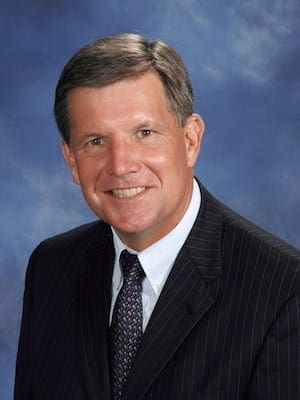The first time I walked onto the grounds at Augusta National in 2002, the lush beauty overcame me.
I have been privileged to attend The Masters several times through the years, and on each visit, I am inspired when I step foot on this immaculately manicured acreage, which is a rare combination of botanical gardens, nature preserve and golf course.
During my years as a pastor, I gleaned valuable insights about life, business and ministry from innovative organizations that strive for excellence, companies like Disney, Amazon, Chick-fil-A and Apple.
As I watched the golf tournament on TV and recalled my previous visits to the property, I began to reflect on the lessons the church could learn from The Masters.
Here are a few things worth considering:
1. Hospitality is welcoming and winsome.
From the parking attendants, to the ticket takers, to the groundskeepers, Augusta National evokes a friendly vibe as staff members greet patrons with “Welcome to the Masters!” and hearty smiles. A hospitable sense of welcome is a trademark of a healthy congregation.
2. Not everything has to be high tech.
Technology is important. I use a smartphone, a laptop and a tablet. And I served churches through the years that embraced technology, striving to have the most recent computers, the most up-to-date audio technology, the most cutting-edge video screens and the most elaborate lighting.
I am not anti-technology, but it is somewhat nice to see thousands of patrons staring at a low-tech manual scoreboard manned by volunteers, which happens to be one of the most iconic scoreboards in the world of golf.
Churches should remember that technology is one tool in the toolbox, and if we become codependent on technology, it can become a liability rather than an asset in ministry.
3. Appreciate silence and celebration.
The aura of Augusta alternates between the roar of the crowd and a holy hush. I am always amazed that thousands of golf enthusiasts can cheer with loud enthusiasm, and yet a few moments later they can stand still in focused silence as a golfer is about to putt.
A healthy church appreciates and makes space for silent meditation and jubilant celebration.
4. Simplicity and excellence often work in tandem.
The kitchen staff at Augusta has mastered the art of making egg-salad-and-pimento-cheese sandwiches. Nothing fancy. Just a simple sandwich.
Excellence in the local church doesn’t require glitz and glamour, but often emerges in doing the simple things well.
5. Spectators cheer for the golfers, not against them.
In other sports, and even at other tournaments, fans may boo or jeer the opposing team or their least favorite golfer. Church is a place to “encourage one another” without prejudice.
6. Golf has a discipleship program that is called “drive, chip and putt.”
This catechism is designed to teach basic skills and disciplines. Healthy churches emphasize and exemplify the basic tenets of the faith, giving opportunities for the next generation to practice “on the course.”
7. Bad things happen to good golfers.
Good putts lip out. The false front causes the ball to release and trickle into Rae’s Creek. Wind direction changes, and weather is unpredictable. Yet, the best golfers are required to be disciplined enough to put the last shot behind them and focus on the next.
Likewise, healthy churches help others to put the past behind them, and the future before them, and to “press toward the mark of the high calling of God in Christ Jesus.”
8. New terms, new rules and new norms take some getting used to.
Allow for an adjustment period. Did it sound a little different to hear the announcers referring to “patrons” instead of “fans,” and “penalty areas” instead of “hazards”? Or are you still adjusting to seeing players putt with the pin “in” the hole? Were you surprised when no penalty was assessed for knocking the ball off the tee during a practice swing?
In church, we like to say that our message is timeless, but our methodology is always changing. Churches must exercise patience as our “patrons” adjust to our evolving nomenclature and a rapidly changing culture.
9. Treasure and maximize diversity.
At Augusta National, no two holes are the same. At many golf courses, the trademark characteristic might be big greens or postage stamp greens, lots of undulation or no undulation, elevated greens or elevated tee boxes. However, at Augusta National, the rich diversity of landscape, elevation and undulation is a part of the appeal.
Churches often struggle navigating diversity. But healthy congregations perceive diversity as a strength, and they find ways to leverage their diversity for missional purposes.
10. Everyone loves a good redemption story.
This year, a previous champion, who had fallen to the wayside due to injuries and poor personal decisions, won the tournament. And yet, through hard work, he rebuilt his swing, rebuilt his game and is in the process of rebuilding his reputation.
Among many other things, church is a place of spiritual redemption, a place where the prodigal is welcomed home, a place where grace covers a multitude of sins, a place where we celebrate recovery and a place where all stand on level ground before the cross.
The golf club at Augusta National is not a religious place, but in their quest for excellence in facilities and engagement with their patrons, there are a few things we as the church can learn from them.
Editor’s note: A version of this article first appeared on the Center for Healthy Churches’ blog. It is used with permission.
Pastor at the Wieuca Road Baptist Church in Atlanta. He also serves as a leadership coach and columnist for the Center for Healthy Churches. He and his wife, Amanda, live in Brookhaven, Georgia.


